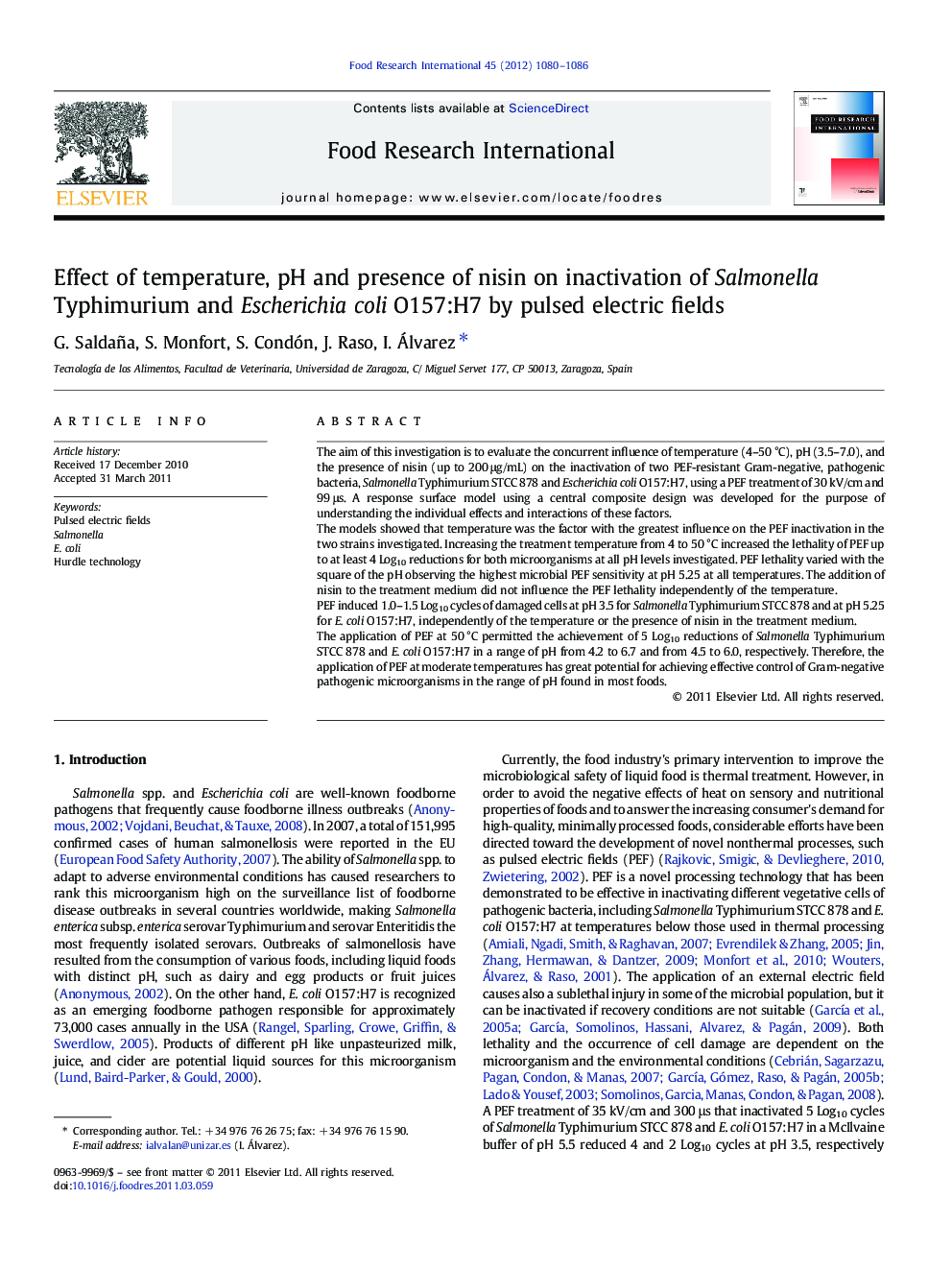| کد مقاله | کد نشریه | سال انتشار | مقاله انگلیسی | نسخه تمام متن |
|---|---|---|---|---|
| 4561772 | 1330688 | 2012 | 7 صفحه PDF | دانلود رایگان |

The aim of this investigation is to evaluate the concurrent influence of temperature (4–50 °C), pH (3.5–7.0), and the presence of nisin (up to 200 μg/mL) on the inactivation of two PEF-resistant Gram-negative, pathogenic bacteria, Salmonella Typhimurium STCC 878 and Escherichia coli O157:H7, using a PEF treatment of 30 kV/cm and 99 μs. A response surface model using a central composite design was developed for the purpose of understanding the individual effects and interactions of these factors.The models showed that temperature was the factor with the greatest influence on the PEF inactivation in the two strains investigated. Increasing the treatment temperature from 4 to 50 °C increased the lethality of PEF up to at least 4 Log10 reductions for both microorganisms at all pH levels investigated. PEF lethality varied with the square of the pH observing the highest microbial PEF sensitivity at pH 5.25 at all temperatures. The addition of nisin to the treatment medium did not influence the PEF lethality independently of the temperature.PEF induced 1.0–1.5 Log10 cycles of damaged cells at pH 3.5 for Salmonella Typhimurium STCC 878 and at pH 5.25 for E. coli O157:H7, independently of the temperature or the presence of nisin in the treatment medium.The application of PEF at 50 °C permitted the achievement of 5 Log10 reductions of Salmonella Typhimurium STCC 878 and E. coli O157:H7 in a range of pH from 4.2 to 6.7 and from 4.5 to 6.0, respectively. Therefore, the application of PEF at moderate temperatures has great potential for achieving effective control of Gram-negative pathogenic microorganisms in the range of pH found in most foods.
Research Highlights
► Nisin did not influence PEF lethality of Salmonella Typhimurium nor E. coli O157:H7.
► pH 5.25, a pH of maximum PEF sensitivity of Gram negative bacteria.
► PEF lethality dramatically increases with temperature independently of the pH.
► 5-log reductions of Salmonella Typhimurium and E. coli O157:H7 after PEF at 50 °C.
Journal: Food Research International - Volume 45, Issue 2, March 2012, Pages 1080–1086